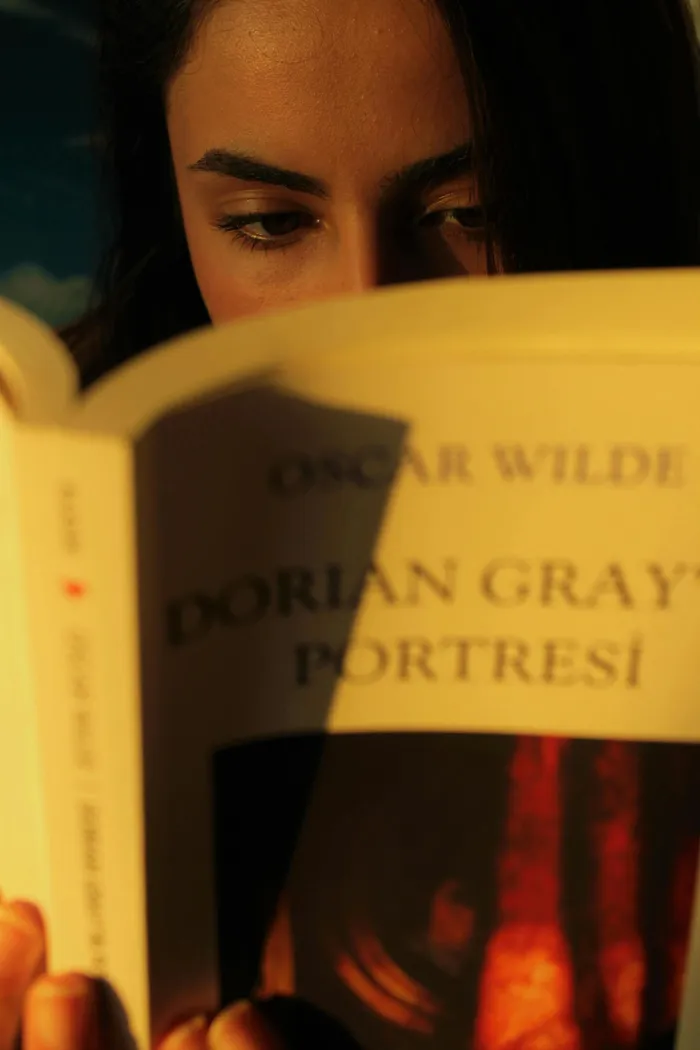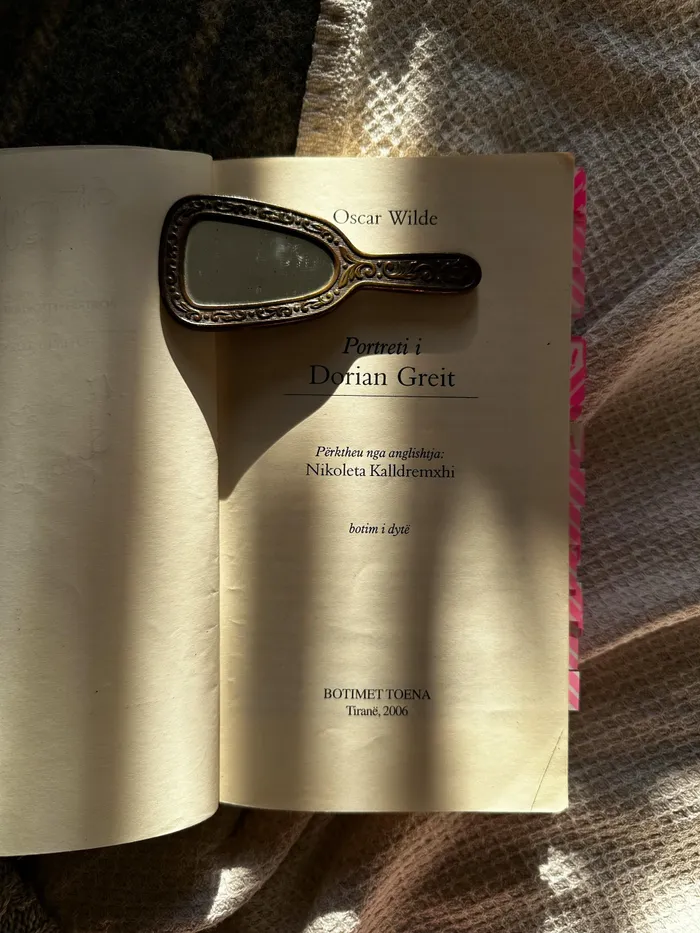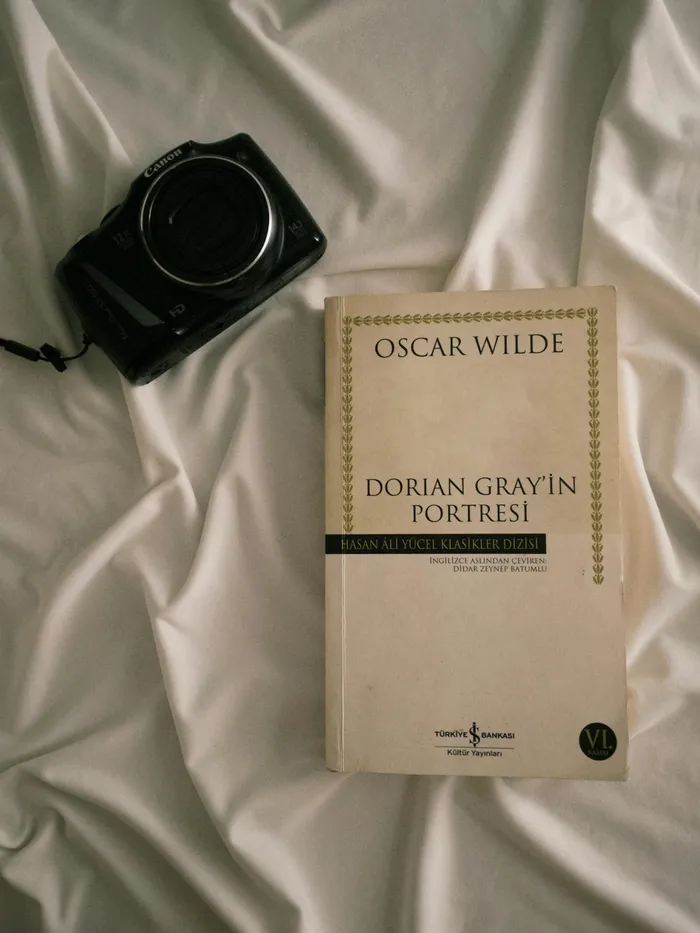The enduring power of Dorian Gray: Why Oscar Wilde's tale still captivates audiences today
ART FOR ART'S SAKE

A woman reads Oscar Wilde's novel The Picture of Dorian Gray, whose legacy endures long after being published in 1891.
Image: Pexels
Last season on Broadway, one of the most buzzworthy shows was Kip Williams’s adaptation of Oscar Wilde’s novel “The Picture of Dorian Gray.” Originally presented by the Sydney Theater Company, the production featured 26 characters, all played by “Succession” actress Sarah Snook. When the show moved to London’s West End, Snook won an Olivier Award; when it came to Broadway, she won a Tony.
Though the show was thoroughly modern, with plenty of technological wizardry, the story was not. Wilde’s novel was published in 1891. And that prompts the question: How is it that “Dorian Gray” continues to be relevant to modern audiences?
Scholar Richard A. Kaye, editor of the D.H. Lawrence Review, considers this longevity with the thought-provoking “The Picture of Dorian Gray in the Twenty-first Century.” The collection of 14 essays by distinguished academics and experts argues that Wilde’s only novel is as germane today as it was when it first appeared, maybe even more so. It is “not only a canonical text, widely taught in undergraduate and graduate-level classrooms, it is also a highly popular work of fiction among non-academic readers,” Kaye writes in the introduction. “In the last two decades, ‘The Picture of Dorian Gray’ has assumed a place alongside other enduring ‘gothic’ British texts such as Mary Shelley’s ‘Frankenstein,’ Robert Louis Stevenson’s ‘The Strange Case of Dr. Jekyll and Mr. Hyde,’ and Bram Stroker’s ‘Dracula.’”

Oscar Wilde's The Picture of Dorian Gray created a stir when published.
Image: Pexels
This was not always the case. When readers initially encountered Dorian Gray, his story often met with rebuke, creating a scandal that had a profound effect on Wilde’s life. The story’s publication was set in motion in 1889 when J.M. Stoddart, managing editor of Philadelphia-based Lippincott’s Monthly Magazine, hosted a dinner in London at the Langham Hotel for Wilde, Arthur Conan Doyle and T.P. Gill to commission novellas from all three. Wilde finished other obligations, then worked nonstop for four weeks repurposing an earlier effort titled “The Portrait of Mr. W. H.” and submitted “The Picture of Dorian Gray” in April 1890. Concerned that a mainstream audience might react negatively to the obvious homosexual undertones of some passages, Stoddart cut 500 words before publishing the novella in the July issue in Philadelphia and London.
His edits did not assuage a backlash. In his introduction to “The Uncensored Picture of Dorian Gray,” published by Belknap Press in 2012, Nicholas Frankel writes: “[The novella] was immediately controversial. [A] significant segment of the British press reacted with outright hostility, condemning [it] as ‘vulgar,’ ‘unclean,’ ‘poisonous,’ ‘discreditable,’ and ‘a sham.’” As a result, in 1891, when the London publisher Ward, Lock & Co. decided to publish “Dorian Gray” as a book, Wilde hoped to blunt criticism by adding six new chapters and a preface in which he presented a discourse on aestheticism, a document that argued for the importance of art for art’s sake. Ignoring Wilde’s attempt to elevate the discourse, critics degraded the novel as strongly as they had the magazine novella, using words such as “unhealthy” and “insane” to attack it.

Author Oscar Wilde was jailed, and died three years after his release.
Image: Pexels
Despite the controversy, Wilde followed “Dorian Gray” with an astounding period of productivity during which he wrote the plays “Lady Windermere’s Fan,” “A Woman of No Importance,” “An Ideal Husband” and his masterwork, “The Importance of Being Earnest.” He was at the pinnacle of his creative powers in April 1895 when he was arrested for “gross indecency” - married to Constance Wilde and with two sons, Wilde nevertheless had homosexual encounters culminating in an affair with Lord Alfred Douglas, 16 years his junior. He was found guilty in May and sentenced to two years of hard labor in prison. Kaye believes “Dorian Gray” “helped in Wilde’s prosecution … when sections of the more explicitly homoerotic Lippincott’s edition were read out loud in court.” Wilde’s imprisonment was soul-crushing, and he died three years after his release, having written little new work. He was 46.
For years after Wilde’s death, “Dorian Gray” remained tainted by scandal, its own and its author’s. Readers felt uneasy about the novel’s hedonism and homosexual subtext, often viewing it as fin de siècle. In 1945, Albert Lewin’s horror-film adaptation brought Wilde’s story to a wider audience, but the effort was so flawed that critic Bosley Crowther believed “Wilde would probably have split his portly sides laughing at the mawkish pomposity of the film.” It was not until 1980, when Joyce Carol Oates published the essay “‘The Picture of Dorian Gray’: Wilde’s Parable of the Fall,” that opinion changed. Declaring it “one of the strongest and most haunting of English novels,” Oates argued that the work was a “highly serious meditation upon the moral role of the artist.” Only in recent years, then, has the novel been viewed as an important work of art instead of a gothic tale of hedonism with a clever plot twist.

In Oscar Wilde's The Picture of Dorian Gray, a young man makes a Faustian bargain for a painting of him to age in his place.
Image: Pexels
About that plot twist. In 1887, once Wilde finished sitting for portrait painter Frances Richards, he quipped, “What a tragic thing it is. This portrait will never grow older and I shall. If it was only the other way!” With that concept in mind, Wilde undertook his story. In the novel, after having his portrait painted by Basil Hallward while his friend Lord Henry Wotton looks on, Dorian Gray, a captivatingly beautiful young man and the object of adoration of both the painter and the onlooker, makes a Faustian bargain for the painting to age in place of him. Dorian’s actions, decadent interludes interspersed among relations suggested to be homosexual, damage only the figure in the picture, which Dorian keeps secreted away in an upstairs bedroom in his home.
His inner perversion produces visible destruction in the painting’s figure, as when Dorian appears to fall in love with Sybil Vane, a second-tier stage actress, only to renege on his promise to marry her, throwing her into an upset so severe she kills herself. When he shows Hallward the decaying picture, the artist’s action so offends him that, in a fit of rage, Dorian stabs the painter in the neck, killing him. Dorian then blackmails Alan Campbell, a scientist with whom he once had an affair, to dispose of the body using chemicals, an act that torments Campbell until he, too, kills himself. Haunted by these deaths, Dorian destroys the portrait, stabbing it with a knife, but the grotesque figure morphs into the beautiful young Dorian, causing the older Dorian to collapse to the floor, where he is discovered dead, resembling the monstrous figure once in the portrait.
Historically, “Dorian Gray” has been viewed as a treatise on aestheticism, a cautionary tale against the excessive nature of hedonism, and an examination of the relationship between life and art. Yet Kaye believes the novel “remains a deeply mysterious, stirring, and elusive work [and even] more so today than when Oates offered her appraisal.” It should not be surprising that in an Ozempic-obsessed culture fixated on remaining youthful, readers today respond to Dorian’s wish for eternal youth. Nor is it surprising that today’s audiences, enamored by the paranormal - Harry Potter and its descendants, romantasy, “Stranger Things” - should relish Wilde’s unique expression of mysticism and magical realism.
But there is one main reason “Dorian Gray” is relevant today. It can now be seen as a “gay” novel. Wilde uses Dorian’s homosexual relations as the source of the destruction in the portrait’s figure, reflecting Victorian England’s view of homosexuality. Once he turns monstrous, Dorian can blackmail Campbell because the former lover fears exposure. And the novel’s underlying plot hinges on the fact that Hallward is in love with Dorian, the reason he wishes to paint him in the first place - a love he is unable to express.
“Dorian Gray” is a discourse on the destructive forces that are unleashed when a society, through mores and laws, prevents a person from living his true life. It is precisely what destroyed Wilde when he had so much more to contribute to literature. Still, at least now the novel can be seen for what it is, as one critic puts it: among the “foundational works of modern gay culture.”
Related Topics: